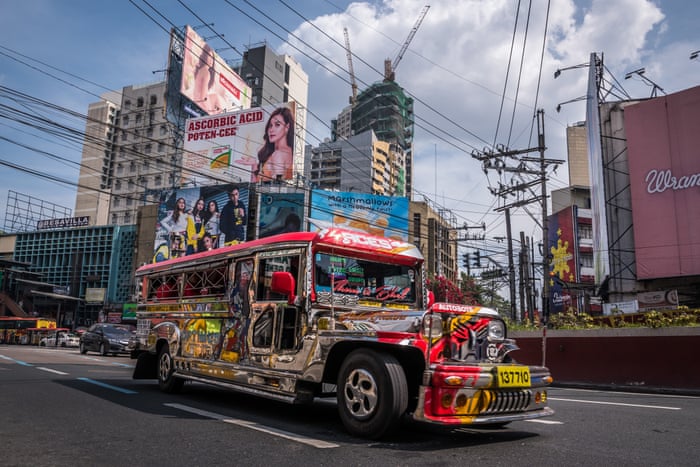Increase Brand Reach with Transit Advertising Philippines
Increase Brand Reach with Transit Advertising Philippines
Blog Article
Checking Out the Impact and Performance of Transit Advertising And Marketing in Urban Marketing Techniques
Transit marketing has actually ended up being a substantial part of city advertising and marketing strategies, profiting from the unique dynamics of public transport atmospheres. Its capacity to get to a diverse and broad audience presents brands with a chance to develop meaningful links with constant presence. Nonetheless, with the fast development of innovation and changing consumer habits, the landscape of transportation marketing is going through notable changes that warrant closer evaluation. What effects do these fads hold for marketers seeking to harness the complete capacity of this medium?
The Surge of Transportation Marketing
As urban populaces proceed to swell, the need for cutting-edge advertising remedies has led to the increase of transit advertising and marketing as a pivotal part of urban advertising and marketing approaches. This kind of advertising and marketing leverages mass transit systems-- such as trains, metros, and buses-- to get to a varied audience in largely booming locations. The effectiveness of transportation advertising and marketing lies in its ability to engage consumers during their daily commutes, an often forgotten yet crucial time for brand name messaging.
With cities ending up being increasingly overloaded, standard marketing spaces are coming to be scarce and much less efficient. Transportation marketing uses a dynamic alternative, allowing brand names to showcase their messages in high-traffic areas where prospective customers are constantly exposed to the advertisements. In addition, as city locals significantly rely upon public transport, the relevance and presence of transit marketing have grown significantly.
Furthermore, technological innovations have actually improved the refinement of transportation advertising and marketing, permitting electronic screens and interactive campaigns that can capture consumer focus better than static advertisements. Because of this, transportation marketing is not just an economical choice however likewise a vital approach for brand names seeking to connect with urban consumers in a remarkable and impactful fashion.
Trick Advantages of Transit Advertising
The efficiency of transit advertising is underscored by its diverse advantages, making it a very useful tool for urban marketing professionals. One of the primary benefits is its considerable reach; transportation systems offer numerous passengers daily, allowing brand names to get in touch with a varied audience in high-traffic settings. This exposure improves brand awareness, making certain that promotions are seen repetitively by commuters.

Additionally, transportation advertising and marketing is cost-efficient compared to various other media, providing a reduced cost per impact while preserving high exposure. The versatility of ad formats, from bus covers to electronic displays, enables innovative and impactful projects that can adapt to changing market needs.
Customer Behavior Insights
A significant portion of consumer actions is affected by the prevalent nature of transit advertising and marketing in metropolitan settings. This form of advertising records the attention of varied demographics, engaging consumers during their daily commutes. As individuals browse busy cityscapes, they encounter transit advertisements in various formats, including bus wraps, this article subway posters, and electronic displays. The critical positioning of these advertisements optimizes exposure, consequently boosting brand recall.
Study indicates that transit advertising can stimulate emotional feedbacks, causing boosted brand name affinity. Consumers often associate the experience of commuting with certain brand names, producing a long lasting perception that affects purchasing choices. Moreover, the regularity of direct exposure to transit ads cultivates experience, which is an important variable in consumer depend on and commitment.

Furthermore, the communal aspect of public transport contributes to this phenomenon; as people share rooms, they are more probable to talk about and recommend brands they run into. Hence, transportation advertising and marketing not only gets to consumers but likewise promotes social interactions that enhance brand messaging. Comprehending these behavioral insights enables online marketers to customize their methods efficiently, making sure that their campaigns reverberate with target market in the city landscape.
Study and Success Stories
Successful application of transportation advertising and marketing methods is exemplified with numerous situation research studies that highlight its effectiveness in urban advertising. One significant instance is the partnership in between a prominent drink business and a significant city's public transportation system. The campaign used bus covers and indoor posters, resulting in a 30% boost in brand acknowledgment and a 15% surge in sales within the target demographic over three months.
Another successful case involved a regional dining establishment chain that employed train terminal marketing to draw in commuters. By developing visually striking ads that used timed promotions, the restaurant experienced an uptick in foot website traffic, with an outstanding 25% rise in lunch hour customers.
Furthermore, a city's tourism board introduced a transit campaign showcasing neighborhood destinations via bus quit display screens and train ads. The effort brought about a significant increase in vacationer visits, as reported by a 40% rise in questions at site visitor facilities.
These situation research studies highlight the flexibility and possibility of transit advertising and marketing to engage city audiences efficiently, demonstrating that calculated positionings can generate considerable returns on investment and boost brand name visibility in busy urban environments. - Transit Advertising Philippines
Future Trends in Transportation Marketing
As metropolitan landscapes proceed to develop, so too does the world of transportation marketing, which is poised to embrace cutting-edge innovations and approaches. One significant pattern is the assimilation of electronic advertising displays into public transportation systems.
An additional emerging fad is making use of enhanced reality (AR) and online fact (VR) experiences within transit advertising and marketing. These immersive modern technologies can captivate commuters, changing ordinary trips into interactive brand experiences. Additionally, sustainability is becoming progressively crucial; environmentally friendly advertising products and techniques are most likely to gain traction, reflecting the expanding customer need for corporate social responsibility.
Last but not least, the surge of mobile connectivity will certainly facilitate better combination between transportation advertising and individual devices. Advertisers can create seamless cross-channel experiences, enabling prompt communication and involvement with possible consumers. Jointly, these patterns show a this article transformative future for transit advertising and marketing, using brand-new avenues for brands to get in touch with metropolitan audiences.
Verdict
Transit advertising and marketing has actually established itself as a substantial element of metropolitan marketing strategies, demonstrating significant effectiveness with boosted brand visibility and customer interaction. The capacity to adapt messages to details demographics, pop over to this site combined with the innovative use of innovation, settings transportation advertising and marketing as a driving pressure in modern advertising (Transit Advertising Philippines). As city atmospheres proceed to advance, the future of transit marketing promises additional innovations, ensuring its relevance and influence fit consumer assumptions and habits in metropolitan landscapes
As urban populations proceed to swell, the need for ingenious advertising and marketing services has actually led to the surge of transportation marketing as an essential component of city advertising and marketing strategies.A significant section of customer habits is influenced by the pervasive nature of transportation marketing in city settings. Jointly, these trends suggest a transformative future for transportation advertising and marketing, offering brand-new opportunities for brand names to link with metropolitan target markets.
Transportation marketing has established itself as a significant component of metropolitan advertising and marketing methods, demonstrating substantial efficiency with improved brand visibility and consumer involvement. As urban atmospheres proceed to progress, the future of transportation advertising promises additional improvements, guaranteeing its significance and effect in forming customer assumptions and actions in metropolitan landscapes.
Report this page